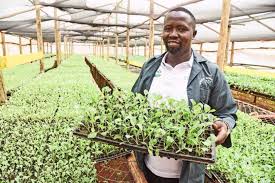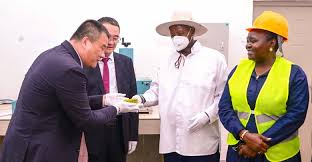In Kiambu County, Kenya, a quiet revolution has been quietly transforming lives. The Kiambu People Who Use Drugs (PWUD) Project is a bold initiative designed to help people struggling with drug addiction, not through punishment, but with care, dignity, and evidence-based solutions.
“For years, people who used drugs in Kiambu, especially heroin and opium, were among the most marginalized members of society,” said Morris Kariuki Chege, chairperson of the Haven Addiction Center. “They faced stigma everywhere – in hospitals, at home, even on the streets.”
Launched in 2021 with support from the government and development partners, the program took a radical yet simple approach: meet people where they are, offer comprehensive health services, and support them on their path to recovery.
Participants received medically assisted therapy (MAT) such as methadone and buprenorphine, along with HIV, TB, and STI screening, mental health care, nutrition support, and sexual and reproductive health services. Some clinics even offered cancer screening.
A cornerstone of the program was the Empowerment Centre, where clients could learn skills like tailoring or computing, helping them rebuild their lives beyond drug use. Community outreach programs brought mini-clinics closer to people and trained former drug users as peer educators, building trust and encouraging others to join.
The impact of the program was profound:
• From April 2021 to June 2024, over 1,600 individuals enrolled in MAT, mostly young men around 28 years old.
• Retention rates were over 70%, far above typical levels in addiction care.
• Relapse rates fell to under 5%, and the mortality rate dropped to 2.9%.
• Rates of HIV, hepatitis C, and TB remained low, and many clients began preventive treatments like PrEP and PEP.
“These numbers only tell part of the story,” said Dr. Hillary Kagwa, Kiambu County Director of Health. “The real success is in the lives transformed – families reunited, employment gained, and some becoming peer mentors themselves.”
Despite its successes, the project faced challenges:
• Women who use drugs (WWUD) were underrepresented, making up only 7.7% of clients due to stigma, fear of losing custody, and lack of childcare.
• There was a shortage of trained addiction counselors, and approvals for take-home medication were slow.
• A freeze in donor funding in 2023 forced an early closure, leaving questions about long-term sustainability.
The lessons from Kiambu highlight the future of harm reduction in Kenya:
• Expand mini-MAT clinics and satellite sites to reduce travel barriers.
• Extend services to prisons to ensure uninterrupted care.
• Strengthen peer educator networks and client-led organizations.
• Advocate for policy reforms to streamline access to take-home doses.
• Integrate digital health systems to improve client tracking.
• Design gender-specific interventions, including trauma-informed care and childcare support.
• Conduct midterm evaluations to adapt programs in real time.
The Kiambu PWUD Project may have ended early, but its legacy endures. It proved that people who use drugs are not lost causes. With compassion, science, and policy working together, addiction can be treated with dignity, and lives, families, and communities can be rebuilt.
“This was more than a health intervention,” said John Mbau, NASCOP Key and Vulnerable Population Program Manager. “It was a shift in thinking – showing that empathy and holistic care can heal not just individuals, but entire communities.”



